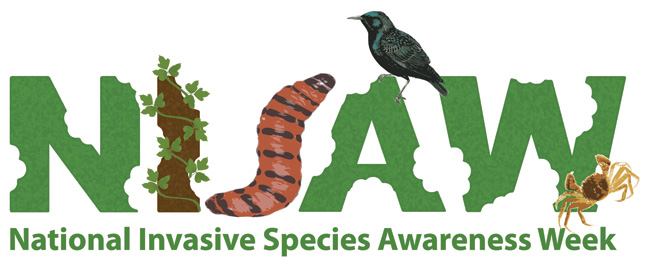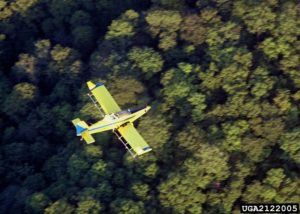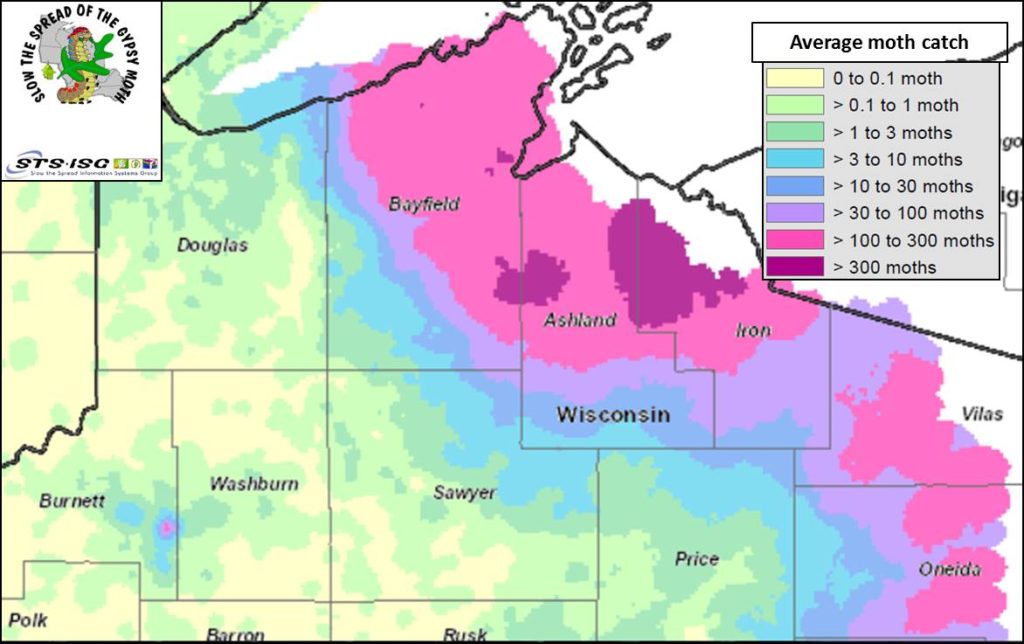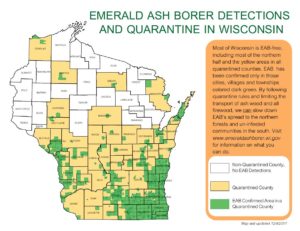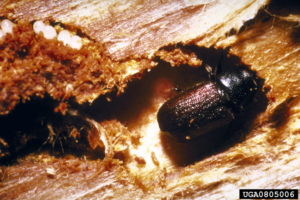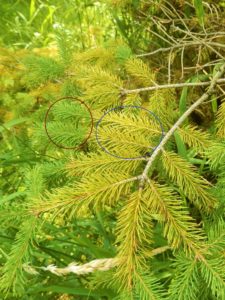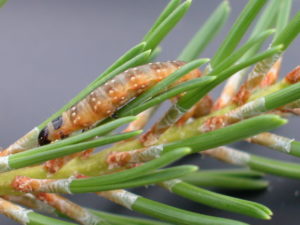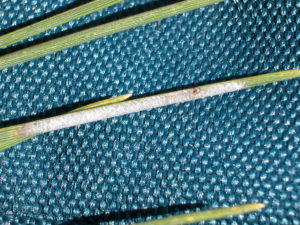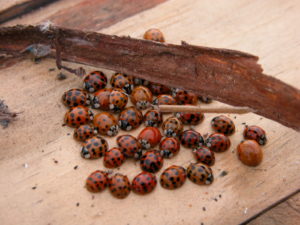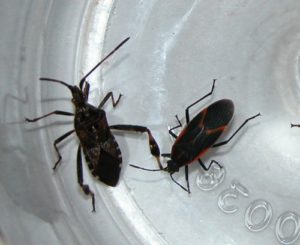Past reports from the 1992 and 1967 WI DNR Forest Health Annual Reports
25 years ago – 1992
“European fruit lecanium (Parthenolecanium corni (Bouche))
Heavy infestations of this scale insect were reported on sugar maple twigs in Vilas and Price counties.
Jack pine budworm (Choristoneura pinus (Rohwer))
The outbreak in the northwestern counties, which began in 1991, exploded this year (Figure 16). Over 114,000 acres of jack pine were heavily defoliated in Douglas, Bayfield, Washburn and Burnett counties. Egg mass surveys indicate extremely high numbers of jack pine budworm. The area of defoliation may increase in 1993. The present defoliation is not expected to cause significant mortality except in Highland Township, but another year of heavy defoliation in the same stands could cause 10-15 percent mortality. In Highland Township, Douglas County, extremely severe feeding produced significant. mortality and top dieback on several thousand acres of jack pine. Most of these stands are being harvested this winter. Moderate to heavy defoliation also occurred in Jackson, Juneau, Eau Claire, Marinette (1,650 acres), Vilas (2,960 acres) and Oconto counties. In Marinette County, 20 acres of 70-year-old jack pine were cut to release young jack pine and white pine. Jack pine budworm was causing severe top mortality. Evidence of budworm in the northern portion of the Monroe County Forest was observed on 35-40 year old jack pine (Sections 4, 9,16, T19N, R3W). DNR foresters have silvicultural guidelines available to manage budworm-prone jack pine stands.”
Continue reading “Of historical interest…” →
